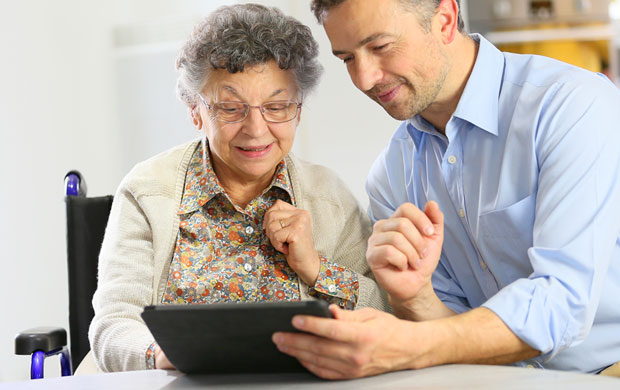Medicare started off the year putting into action a program to encourage more doctors to discuss end-of-life and advance care plans with patients. While the details tend to focus on the hard choices on the far side of those arrangements, new and near-future technologies could preserve life’s simple pleasures on their front end.
End-of-life conversations are meant to cover more than the final days or weeks when many, or even all, of an individual’s needs have to be fulfilled by others, often in an institutional setting.
There’s a growing movement to include in those discussions options for the elderly and infirm to “age in place.” For those looking to spend as much time as possible in their familiar home surroundings, technology has been playing an increasingly important role.
For example, tech tools can preserve familial bonds remotely, while ensuring that specialized care is a call or click away.
For those who are open to considering them, new technologies can be a critical component of end-of-life discussions, suggested Perry Price, CEO of Revation Systems.
“Including these ideas into end-of-life conversations is critical for understanding the desires of a loved one,” he told TechNewsWorld. “It is important to know the preferences of how they want their assets or living environments to be either prolonged or changed.”
Maintaining Connections
Living environments can play an important role not only in an individual’s sense of comfort and well being, but also in life expectancy.
Social isolation can have an adverse impact on health, for example, and it has been associated with an increased likelihood of premature death, noted Jeff Krueger, CEO of Safe Homecare.
“Thus, while technology provides very important tools to support the care needs of the aging baby boomer population, all stakeholders who are impacted — the senior and the support family — are well served by an integrated care plan availing the senior of technology advances and, critically, personal one-on-one interactive caregiver resources,” he told TechNewsWorld.
Support Groups
While senior citizens may long for simpler times, many of them aren’t letting nostalgia be a roadblock to the information super highway and all of the smart things connected to it.
About 85 percent of respondents aged 50 years and older said in a recent Bask survey that technology was helping them live in their homes longer than they otherwise might be able to.
“The vast majority of seniors and boomers in their homes — people over 50 — are using technology to stay connected to their families,” Bask CEO Jim Dunn told TechNewsWorld.
Technology was credited with helping about 68 percent of senior survey participants stay in contact with family members they weren’t able to visit in person, the company found.
“So we looked at some different technologies,” Dunn said. “One of the fastest-growing trends for the 50-plus group is the adoption of mobile, smart mobile.”
With regular operating system upgrades and the changes they bring, the adoption of mobile devices has introduced it own set of anxieties and frustrations for seniors. About 81 percent of the Bask survey’s respondents indicated that they would use technology more often if they had someone to assist them.




















































